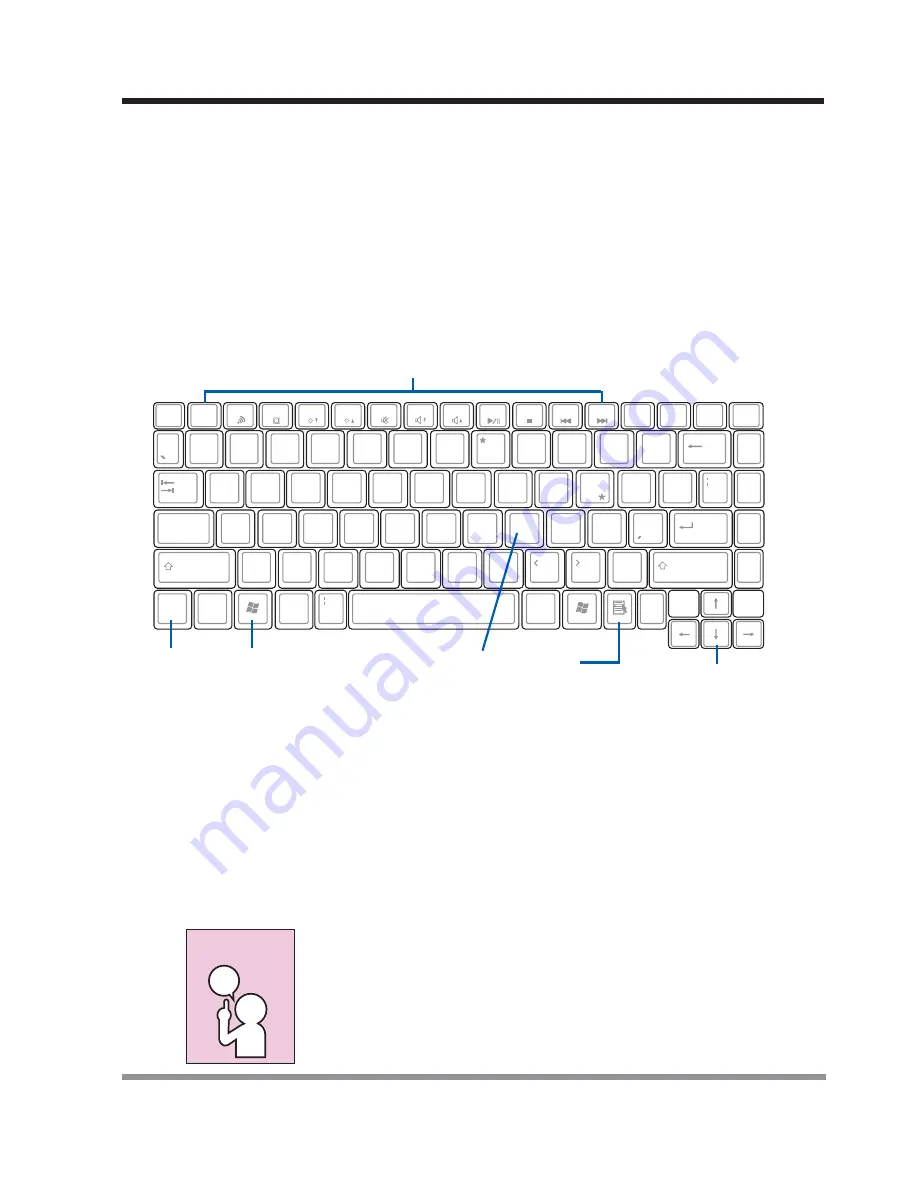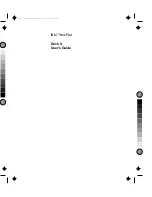
29
2. GETTING STARTED
2-5
Using the Keyboard
Your notebook has an integral 87-key keyboard. The keys perform all the standard
functions of a 101-key keyboard, including the Windows keys and other special function
keys. This section describes the following keys.
•
Numeric keypad
•
Cursor keys
•
Function keys
•
Windows keys
2-5-1 NUMERIC KEYPAD
Certain keys on the keyboard perform dual functions as both standard character keys
and numeric keypad keys. NumLk can be activated by pressing the [NumLk] keys.
Turning off the NumLk feature is done the same way. Once this feature is activated you
can enter numerals 0 through 9, perform addition ( + ), subtraction ( - ), multiplication (
* ), or division ( / ), and enter decimal points ( . ) using the keys designated as ten-key
function keys. The keys in the numeric keypad are marked on the front edge of the key
to indicate their secondary functions.
If you are using the optional external numerical keypad, pressing
the [NumLk] key will activate the external keypad. The indicator
will come on, however it will not change any of the functionality of
your keyboard keys.
POINT
ESC
F1
F2
F3
F4
F5
F6
F7
F8
F9
F10
F11
F12
Pause
Delete
Num Lk
Insert
PgDn
Home
Enter
Backspace
Shift
PgUp
End
Ctrl
Ctrl
Caps
Lock
Alt
Alt
Fn
Shift
Tab
!
~
$
%
^
&
{
(
[
]
)
=
?
\
/
}
1
2
3
4
5
6
7
8
9
0
P
O
I
U
Z
T
R
E
W
Q
A
Y
X
C
V
B
N
M
;
,
:
"
.
.
-
-
-
S
D
F
G
H
J
K
L
@
#
+
7
8
9
6
3
2
1
0
+
5
4
/
\
Scr Lk
Prt Sc
SysRq
Break
Z
Z
Z
Fn
Key
Cursor
Keys
Application
Keys
Numeric
Keypad
Function Keys
Start
Key
















































